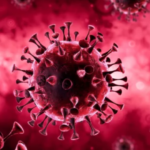
A COVID-19 vaccine being developed by the drug company Moderna in partnership with the National Institute of Allergy and Infectious Diseases (NIAID), part of the National Institutes of Health (NIH) is moving into its next phase after showing initial promising results.
The early results were published the New England Journal of Medicine on July 14. The initial phase included 45 health adults ages 18 to 55, who received two doses of the vaccine 28 days apart. There were three different groups of 15, with each group getting different doses.
All patients showed an immune response and developed antibodies to the coronavirus. Many participants reported side effects — fatigue, chills, headache, muscle pain, and pain at the injection site. But none were considered life threatening. One participant withdrew after the first dose because of “transient urticaria,” which is defined as a swelling of the skin, an allergic reaction.
Moderna is continuing a trial with 600 participants.
The next phase will include 30,000 volunteer participants. If all goes well, Moderna said in its press release that “the Company remains on track to be able to deliver approximately 500 million doses per year, and possibly up to 1 billion doses per year, beginning in 2021.”
This is the first US vaccine candidate to publish results in a peer-reviewed medical journal.
Moderna is also working on developing vaccines for zika, chikungunya, Epstein-Barr virus, and flu.